Search
Search Results
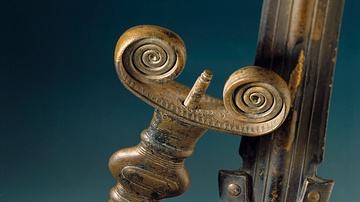
Image
Celtic Antenna Swords
A pair of "antennna swords" made c. 1050-800 BCE during the Hallstatt B Period in Late Bronze Age Europe. Bronze, Hallstatt culture. Found near Lake Neuchâtel, present day Switzerland.
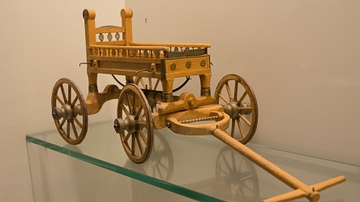
Image
Celtic Waggon Model, Vix Burial
A model of the waggon from the Celtic Vix burial, Châtillon-sur-Seine, in northeast France close to a fortified Celtic site or oppidum and in the vicinity of at least four more burials. Discovered undisturbed, the princely burial dates to...

Image
Celtic Fire-Dog
A Celtic fire-dog excavated at Welwyn, Hertfordshire, England. Iron, 50-25 BCE. Height: 96.5 cm. Fire-dogs were likely used for spit-roasting meat at Celtic feasts. (British Museum, London)

Article
Epona
Epona was a Celtic goddess. Her name contains an allusion to the horse: in Celtic, "epos" means “horse” and the suffix “-ona” affixed simply means “on”. Epona is the patron goddess of mares and foals. The oldest information about the Gallic...

Image
Celtic Helmet, British Museum
A peaked copper-alloy helmet decorated in La Tene style. This style of helmet inspired the Roman "coolus" type helmet, which was one of the more common helmets used by Roman soldiers until its gradual replacement by the so-called "Imperial...
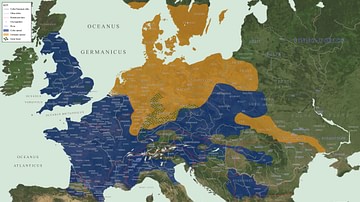
Image
Map of Celtic and Germanic Tribes
This map shows the various Celtic and Germanic tribes around circa 52 BCE.

Image
Map of the The Hallstatt Culture
A map illustrating the spread of the Hallstatt culture, a predominant European Late Bronze and Early Iron Age culture from the 12th to 5th centuries BCE. It is generally accepted as a proto-Celtic culture. It is named after Hallstatt, an...
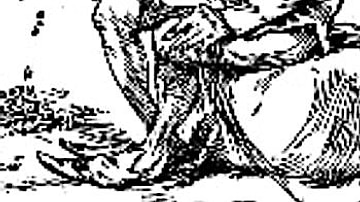
Definition
Leprechaun
Leprechauns (also leprecauns or lepracauns) are figures in Irish folklore who guard hidden treasure. Regarded as small and incredibly agile male fairies or goblins, they most often guard a pot of gold. Leprechauns live solitary lives and...
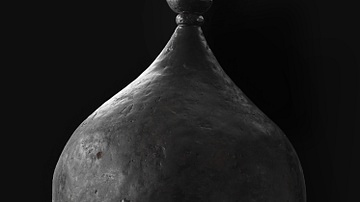
Image
Celtic Helmet, 350 BCE
Helmet, iron, Giubiasco, Ticino. Around 350 BCE. Not just warriors: According to biased descriptions by the Romans and Greeks, the Celts were warriors and barbarians. However, finds of rich grave goods such as jewellery and weapons attest...

Image
Celtic God, Gundestrup Cauldron
A detail of the gilded silver Gundestrup Cauldron showing a Celtic deity. Likely 1st century BCE, produced in the Balkans but found in Denmark in 1891 CE. (National Museum of Denmark, Copenhagen)